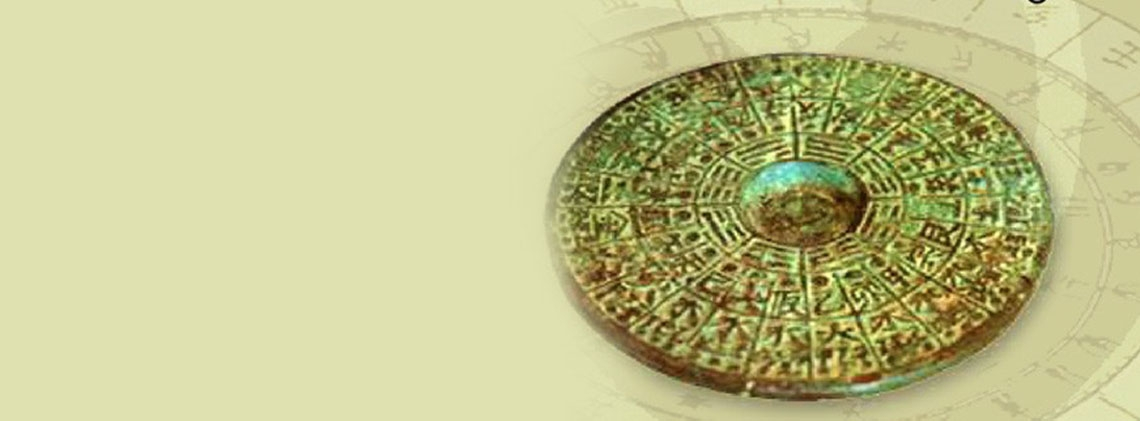
The Compass and Ancient Sailing
Splendid
Chi Culture
Topic
The Compass and Ancient Sailing
The “south-pointing needle” is a magnetic pointing device. When combined with directional markings, it forms a compass. The invention of the compass had a decisive effect on the development of human civilization. Along with paper making, printing, and gunpowder, the compass is one of the four great inventions of ancient China. In order to create the compass, the ancients must have had a certain knowledge of magnetics, including the fact that the long bar magnet aligns itself along a north-south axis as well as the knowledge of geomagnetic declination, that is the fact that the north-south direction of the compass and true north-south do not completely coincide. The angle between magnetic north and true north is called the magnetic declination or magnetic variation. In addition to this, the ancient Chinese must have also had some understanding of magnetic induction, magnetic polarity, and magnetic attraction and repulsion. In fact, the emergence of the compass and its application in navigation, which combined with shipbuilding, navigational technology, and astronomical knowledge in ancient China, undoubtedly had a profound influence on the development of maritime industry in China and the world.
However, the compass was not invented out of thin air; its predecessor was the sinan, or south-controlling spoon. It was an artificial magnetic pointing device, made from lodestone, and is also the oldest south-pointing navigational device in human history. The Eastern Han scholar Wang Chong (27–ca. 100) in the “Shi ying” (Confirming portentous responses) chapter of his Lun heng (Balanced discourses) indicates that the sinan is shaped like a dipper, much like one would use to ladle out soup or wine. When the dipper is placed on a smooth divination board, the handle would point to the south. Going from the sinan, made of lodestone, to a compass, made by magnetization, was a tremendous advancement in both skill and conceptual understanding. The transitional period from the sinan to the compass occurred between the Tang (618–907) and the Song (960–1279) dynasties; in other words, between the ninth and tenth centuries. Numerous references are found to the compass in Song dynasty records. Even older than the sinan is the azimuth, or directional, plate. When a magnetic needle was placed on the azimuth plate, a compass was formed which could be used to determine north and south. It seems that as early as three- to four-thousand BCE, directional markings were painted on some pottery. For instance, fragments of painted pottery from the Dawenkou culture, dated about 4000 BCE, were painted with a square enclosed within an octagon. In ancient China, directions were related to the five phases (i.e., wood, fire, earth, metal, and water) and feng shui (geomancy); eventually the two combined and gave birth to the geomancy compass. The earliest geomancy compasses were square-shaped devices, which were developed from the dipan (a square shaped board or plate symbolizing the earth) used for divination during the Han dynasty (206 BCE–220 CE). The dipan functioned like an early compass: the square in the center had a well in which the south-pointing needle was placed; the eight trigrams (bagua) were used to indicate the directions inside the square, and the eight stems and twelve earthly branches were used to indicate twenty directions outside the square; the rest are geomantic and divination terms. Over time, the square-shaped compass became round. However, either a square or a round geomancy compass can be used as a marine (nautical) compass. Nevertheless, a marine compass does not require multilayer graduated-scales and divination statements because these could interfere with the helmsman’s sight. The nautical compass requires only a simple calibration of directions, that one should be able to see clearly at a glance.
China’s coastline is about 18,000 kilometers long and the country has a long history of shipbuilding and navigation. At first, the ancients sailed only along the local coastal areas. As shipbuilding, navigation, and navigational technologies became increasingly sophisticated, people began sailing to Korea, Japan, and the southeast coastal areas. Beginning in the Han dynasty, the Indian Ocean route was opened. The maritime Silk Road, or so-called Porcelain Road, was formed in the Tang dynasty. Chinese merchant ships transported a considerable amount of porcelain to Da Qin (the Eastern Roman empire) in the northwest corner of the Red Sea. After the Song dynasty, compass navigation was responsible for the increase of maritime shipping routes, and ocean navigation went as far as the Indian Ocean and the east coast of Africa. In summary, half of all maritime routes from China or the East to continental Europe bypassing the Cape of Good Hope were opened by the Chinese. The compass and sidereal navigation allowed the Chinese to cross the Indian Ocean, and lay the foundation for half of the maritime routes Europeans used to sail east.



